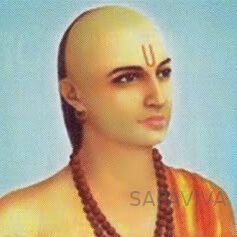(circa 1114 – 1185)
No roll call of world’s greatest mathematicians would be complete without the inclusion of Bhaskaracharya. Often referred to as Bhaskara II, in order to distinguish him from a previous mathematician with similar name (i.e.: Bhaskara I), he was among the leading mathematicians of the Middle Ages. Although he worked primarily on geometry, trigonometry, algebra, arithmetic and astronomy, he did explore various aspects of engineering. Some of his works were so advanced that Europeans did not encounter them until Leonhard Euler unmasked them in the 18th century (which was 600 years later). He applied spherical trigonometry to varied problems of astronomy, and proceeded to document the planetary motions which subsequent researchers improved upon. Bhaskaracharya employed cyclic algorithms (known as Chakravala method) in solving Indeterminate Quadratic Equations, including what Europeans now call Pell’s Equation. His approach remained top-notch for more than 600 years before Joseph-Louis Lagrange’s superseded it. He pioneered the preliminary concept of Calculus, and fostered the so-called Rolle’s Theorem about half-a-millennium before Michel Rolle, Gottfried Leibniz, and Isaac Newton. Among his famous publications is Siddhanta Shiromani: a four-part textbook sectioned into: Lilavati (or Arithmetic), Bijaganita (or Algebra), Grahaganita (i.e. Astronomy and Calculus) and Goladhyaya (which enlivened Geometry and Trigonometry). These works not only attest to his precocity, but consolidate the fact that Asians discovered them long before Europeans did. In 1981, his native India dedicated Bhaskara II satellite, (a low orbit Earth Observation Satellite for gathering ocean and land surface data), to him. Several maths concepts are also named in his honor.
All rights reserved. © Valentine Oduenyi


Thanks for this intro. It is the first time I am hearing about Bhaskaracharya, and you made it both easy and interesting.
This is my first time also.
I am glad to read this great narration about Bhaskara II. So proud to be Indian.
It’s sad that we don’t hear much about them in this part of the world. I’m astonished that these Asians were making advanced mathematics even before Europe awoke.
So sad indeed, but thanks to the Internet we can learn about them now.
A visionary
A great mind indeed!
Awesome! Bhaskara was an amazing talent.
XL Intellect
Appreciate your sharing this wholesome summary.
Amazing
Learning and sharing
Bhaskaracharya was indeed a great genius. Truly outstanding!
This website is a very informative one, thank u all.